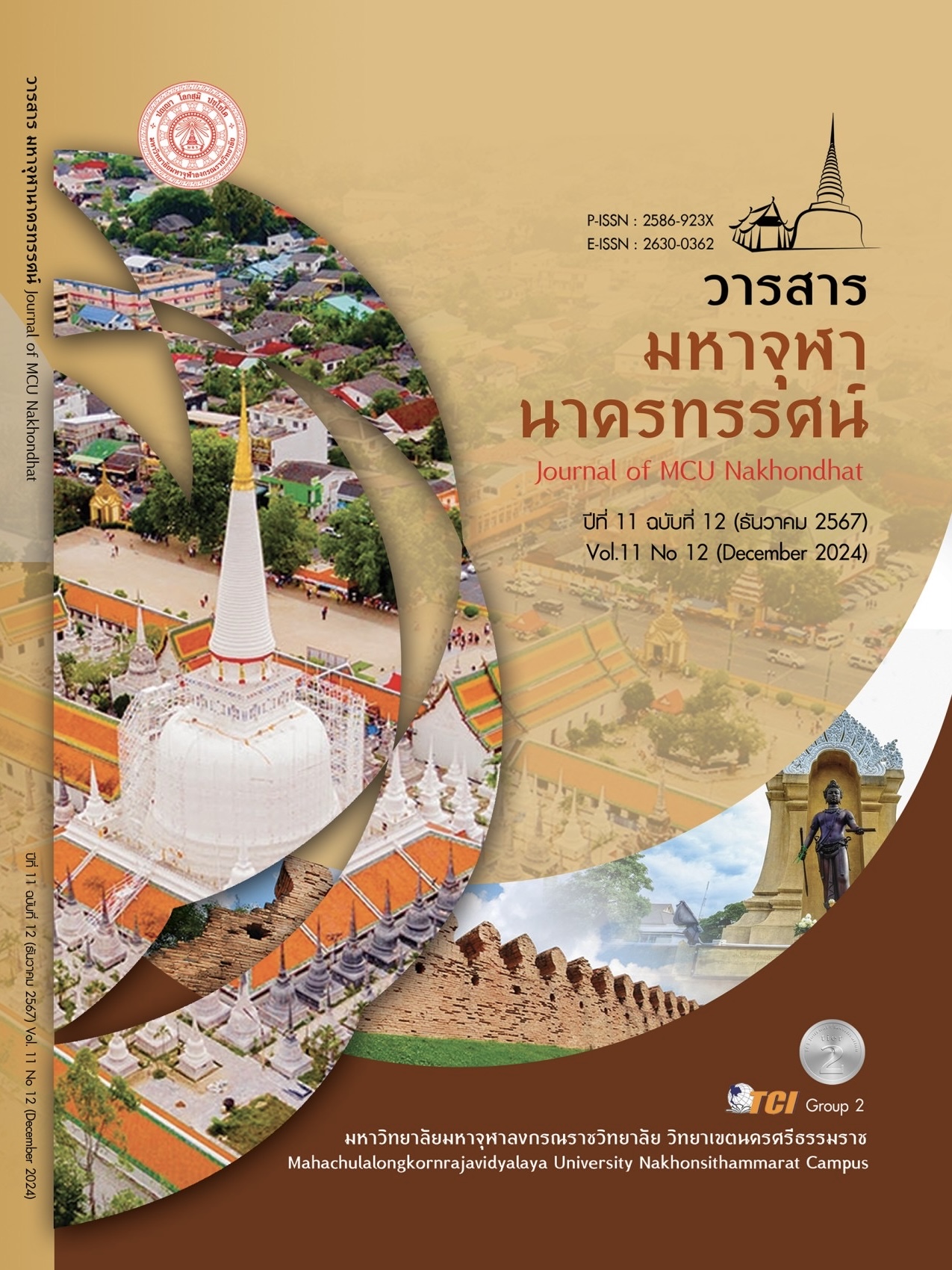FACTORS AFFECTING THAI FOOD CONSUMPTION IN INDIA
Main Article Content
Abstract
This research aims to study the behavior of Indian consumers who consume Thai food and analyze the factors influencing their decision to buy Thai food. It is a quantitative research. The sample group consists of Indian consumers who have eaten Thai food from six regions: North, Central, Northeast, East, South, and West. The sample group was purposively selected for analysis by using structural equation modeling. obtaining 225 samples. The research instrument is questionnaires. Data collection is done by categorizing Thai food in the Indian market into three groups: ready-to-eat food, ready-to-cook food, and condiments. The statistics used in the research and data analysis are frequency, percentage, and causal factor analysis using the Structural Equation Model (SEM). The research results show that in terms of consumption behavior of Thai food in India, most people have bought and chosen to buy Thai food in the category of condiments. Consumers have no limitations in terms of the source of production of products, it can be produced either in India or Thailand. The frequency of purchase is 1 - 2 times per month. The cost per time is 201 - 1,000 rupees. They buy Thai food mostly from supermarkets and receive news about Thai food from someone telling them. The results of the analysis of factors that influence Indian consumers' decision to buy Thai food include product factors, factors related to distribution channels and attitudes towards Thai food, while factors related to price and promotion, were not statistically significant. The results of this study can be used as basic information and guidelines for planning production, trade, and determining policies or strategies to promote Thai food and seasoning products in the Indian market.
Article Details

This work is licensed under a Creative Commons Attribution-NonCommercial-NoDerivatives 4.0 International License.
References
กระทรวงต่างประเทศ. (12 ตุลาคม 2567). บัวแก้วร่วมใจ ดันครัวไทยสู่ครัวโลก. กระทรวงการต่างประเทศ, หน้า 1.
วันทนา ทาตาล และคณะ. (2556). “THAI SELECT” แบรนด์อาหารไทยดังไกลทั่วโลก. วารสารส่งเสริมการลงทุน, 24(12), 18-26.
สถานกงสุลใหญ่ ณ เมืองกัลกัตตา. (12 มกราคม 2567). แนวโน้มอุตสาหกรรมอาหารในอินเดีย ปี 2566 - 2567. สถานกงสุลใหญ่ ณ เมืองกัลกัตตา, หน้า 1.
สำนักงานส่งเสริมการค้าในต่างประเทศ ณ กรุงนิวเดลี. (12 เมษายน 2567). คนอินเดียนิยมทานอาหาร แปรรูปและอาหารนอกบ้านมากขึ้น. ข่าวเด่นประจำเดือน สำนักงานส่งเสริมการค้าในต่างประเทศ ณ กรุงนิวเดลี, หน้า 1-2.
Agarwal, S. & Guirat, R. B. (2017). An empirical study of various factors, influencing the behavior of consumers towards fast food joints in Indian Market. Independent Journal of Management & Production, 8(4), 1341-1364.
Hair, J. F. et al. (2010). Multivariate data analysis. (7th ed.). New York: Pearson.
Hair, J. F. et al. (2014). Multivariate data analysis. (7th ed.). Harlow: Pearson Education Limited.
Mayakkannan, R. (2018). Impact of Buying Behaviour of Consumers towards Instant Food Products in Chennai District. International Journal of Pure and Applied Mathematics, 119(12), 16279-16286.
Mor, K. & Sethia, S. (2015). An Investigation of Consumer Buying Behavior for Food Products: An Empirical Study of Rural and Urban Areas of Haryana. Global Journal of Management and Business Research: E Marketing, 15(8), 7-11.
Raina, A. et al. (2019). Consumption Patterns for Ready to Eat Foods Items in Phagwara District of Punjab (India). International Journal of Innovative Technology and Exploring Engineering (IJITEE), 8(9), 483-486.


